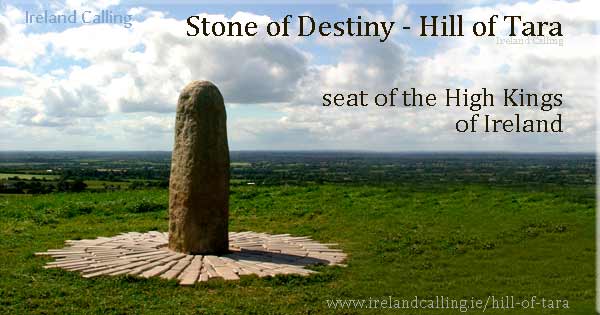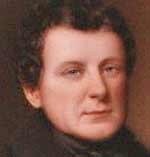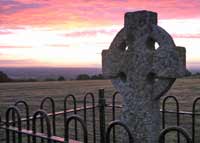The Hill of Tara is likely to have been the political capital of Ireland until 1169 when the country was invaded by Richard de Clare.
Hill of Tara
Attractions in Ireland
The political and spiritual importance of the Hill of Tara only started to fade after St Patrick emerged. Patrick is actually said to have travelled to the Hill of Tara to confront the pagans at their most sacred point.
Although the spiritual importance of the hill started to fade, it has always remained symbolically significant.

Tara’s symbolic significance in modern times

In 1843, Daniel O’Connell staged a peaceful demonstration attended by 750,000 people at the Hill of Tara. They wanted to repeal the Act of Union which stated that Ireland was part of Great Britain.
Today there is a constant battle between developers wanting to build roads around the valley and protestors who want to preserve the area as it is.
In 2009 it was named one of world’s 15 most endangered cultural treasures by the Smithsonian Institution.
Holiday makers who would like to visit the Hill of Tara might want to do so soon while it retains its ancient surroundings and remains unspoiled by modern developments.
Kings married ancient goddess
When kings were inaugurated at the Hill of Tara it is said that they would drink ale and marry the goddess Medb as part of the ceremony. Medb is said to be buried at Rath Maeve which is half a mile south of the Hill of Tara.
To the south of the Royal enclosure an ancient king is said to have been buried in an upright position at Ráith Laoghaire (Laoghaire’s Fort).
Was Tara the capital of Atlantis?

There is a theory that Ireland may have been the mythical kingdom of Atlantis.
Atlantis was first written about by Greek Philosopher, Plato in 360BC. Plato wrote that it was a small island that conquered many parts of Europe and Africa in around 9000BC but was never able to take Athens.
After a day and night of terrible misfortune, Atlantis was drowned under the sea.
Scholars believe that Plato borrowed many elements of his story from earlier legends but there is a new theory put forward by geologist Ulf Erlingsson in a book called ‘Atlantis from a Geographer’s Perspective: Mapping the Fairy Land’.
Erlingsson suggests that the long lost kingdom was never buried under the sea but was in fact Ireland. He believes the Hill of Tara could have been the capital of Atlantis.
Erlingsson says: “Just like Atlantis, Ireland is 300 miles long, 200 miles wide, and widest over the middle. They both feature a central plain that is open to the sea, but fringed by mountains. No other island on earth even comes close to this description.”
Hill of Tara
Was it ancient City of Atlantis?
More top attractions in Ireland
Galway named as one of the ‘best trips’ in the world by top American travel magazine